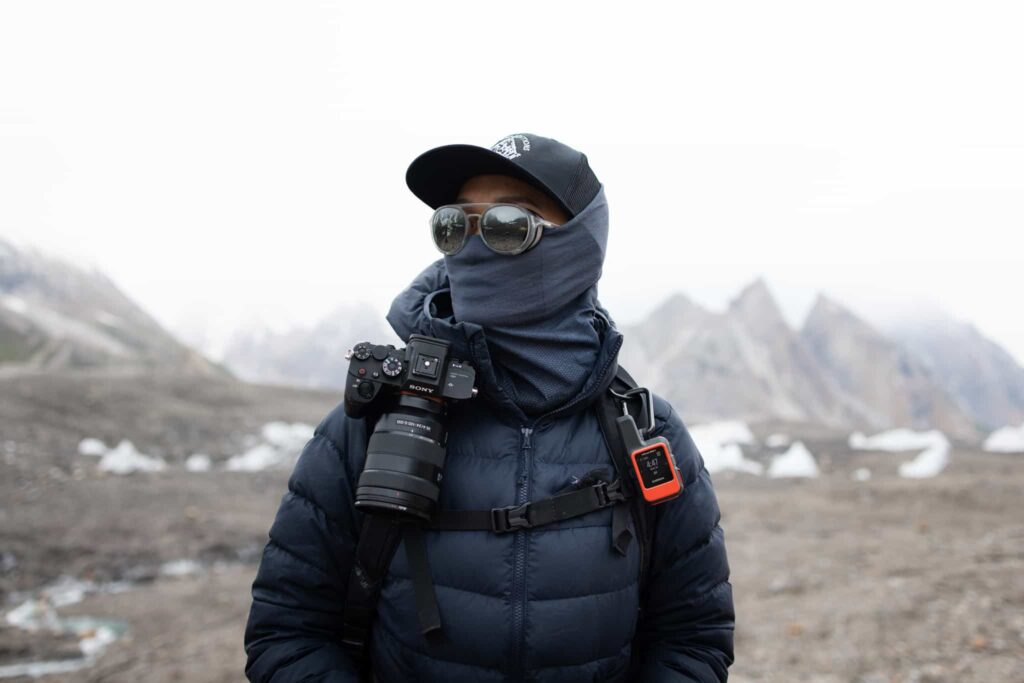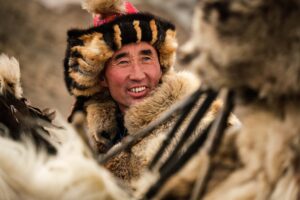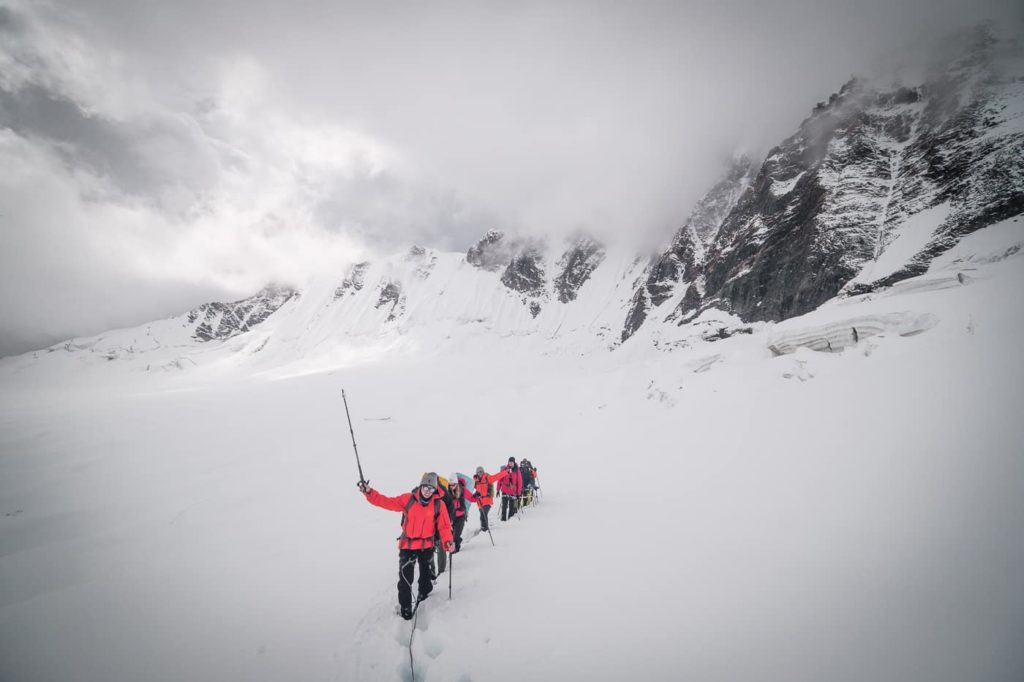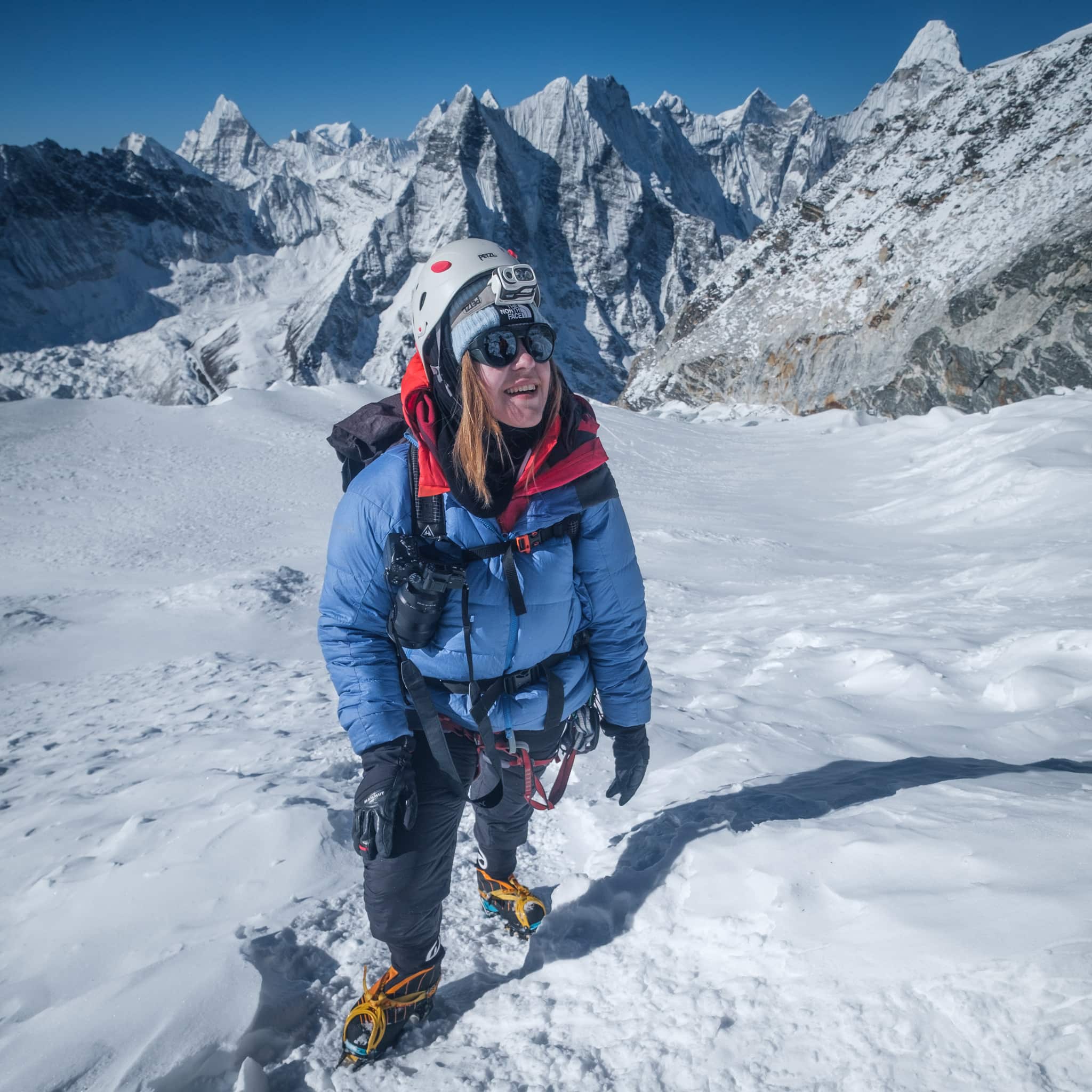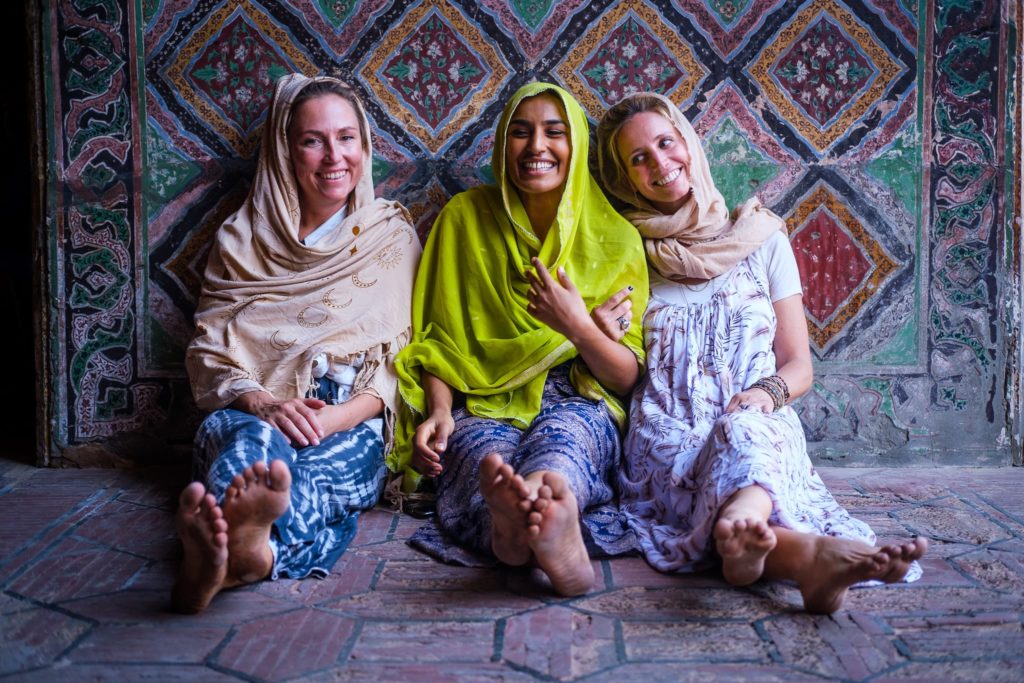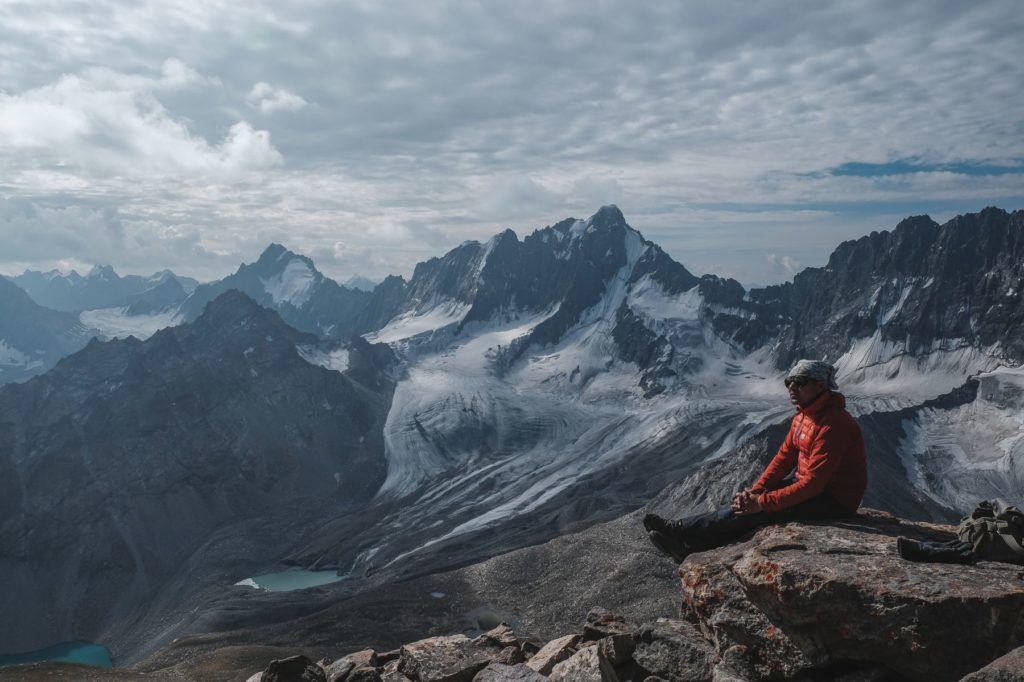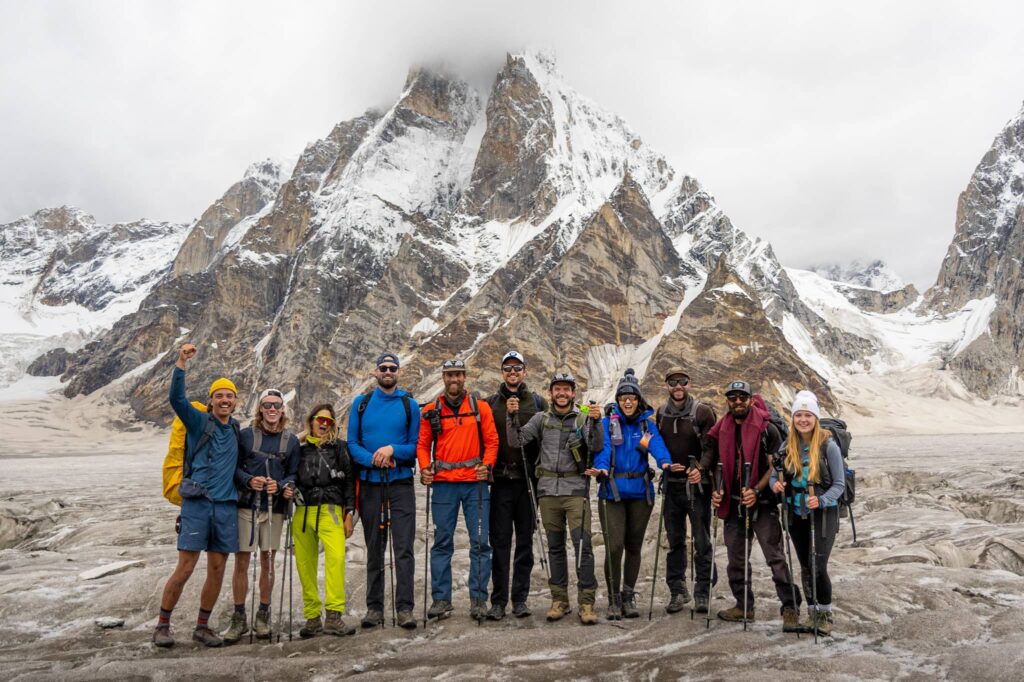Ahhh, the simple hiking buff. It’s a true testament to how “genius lies in simplicity.”
What is a buff? It’s a must-have piece of gear for any outdoor recreational activity.
It’s warm. It’s protective. It’s realistically got more than 20 uses, and that’s lowballing.
And best of all, it’s nothing more than a simple piece of fabric.
Have we piqued your curiosity? We hope so! If you’ve landed here, then you’re at least vaguely curious about the sheer awesomeness of buffs.
“True genius lies in making the complex simple.” Why add five more pieces of adventuring gear to your setup when you could just one that does it all?
Let’s break down buffs and why you need one.
What is a Buff (Technically)
Technically speaking, the broadest definition of a hiking buff (other than downright awesome), is a versatile, tube-shaped piece of fabric. Primarily, they’re intended to be worn around the neck or face, hence their alternative names—‘neck wrap’ or ‘neck gaiter’. They provide insulation and sealing around the collar area, plus they can be utilized as a head or face guard to protect against harsh weather.
The materials of most buffs are lightweight and moisture-wicking (such as polyester microfiber or merino wool). This means buffs seriously capitalize on their inherent versatility. They dry quick, keep you warm, and have a surprising amount of utility, even going so far as functioning as emergency methods of water filtration.
The big emphasis of hiking buffs is that aforementioned utility. The protection they offer across a diverse array of climates is simply unparalleled. Alongside shielding against wind, dust, and worse, they keep you warm in the winter AND protect against UV damage. (Or even your own sweat in hotter climates.)
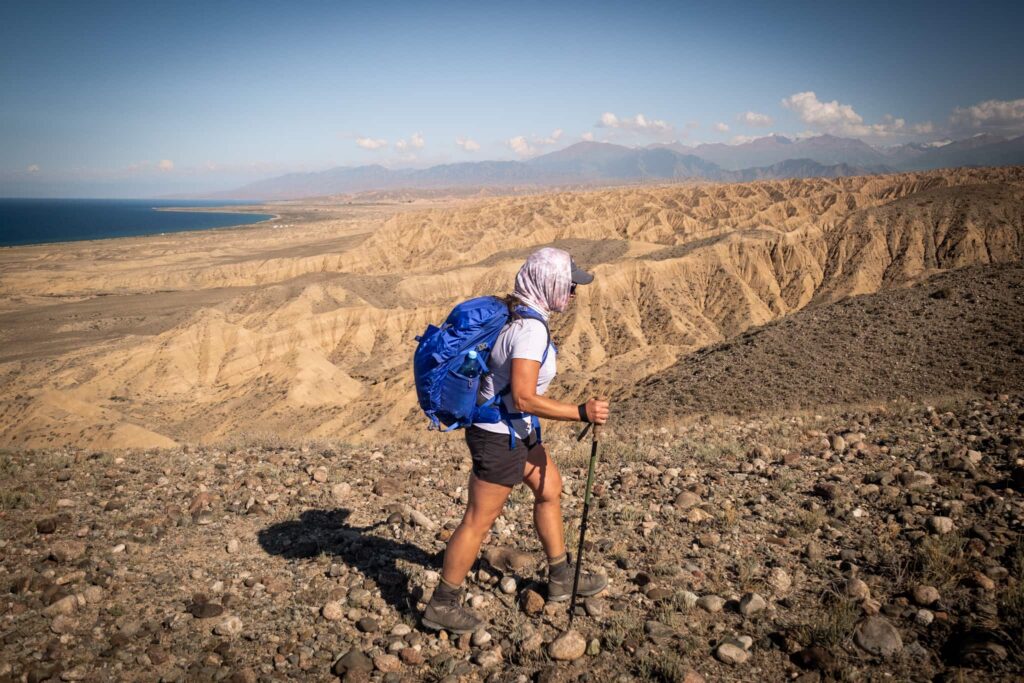
A buff’s stretchable, seamless design, in synergy with its barely-there contribution to your pack’s weight, seals its placement as the ultimate multi-function apparel for trekking. More specialized buffs can even come with insect-repellent coatings, cooling tech, or antimicrobial properties to ward off the woes of a stinky multi-day hike.
Put short, what a buff offers is all the usability of a scarf or keffiyeh with a fifth of the toll on your pack. In our opinion, it’s an essential item for any avid outdoorsy human. (Or an epic gift for the adventurer in your life.)
We can absolutely say across all the trekking and traveling we’ve done, we almost never leave home without a buff.
How Buffs Differ from Bandanas and Balaclavas
A hiking buff is admittedly very similar to a bandana or balaclava. Moreover, if you know how to use a buff to its maximum potential, it can actually substitute for a bandana or balaclava.
In terms of technical differences:
- Buffs are seamless, tubular pieces of fabric. In particular, they’re renowned for their stretchability and adaptability.
- Bandanas, on the other hand, are square or triangular pieces of fabric. While they can be folded and tied for different use cases (like a head covering, sweatband, or dust mask), they lack the elasticity and seamless, tubular design of buffs.
- Finally, balaclavas are full-head coverings. They’re primarily intended for cold weather as they only have openings for the eyes, nose, or mouth. Overall, they’re actually superior in terms of insulation compared to buffs, even those purposefully designed for skiing or mountaineering. However, they also lack the supreme multi-functionality: they have one job and they do it well!
You’ll still get good use out of balaclavas and bandanas in outdoor scenarios.
However, their usability is much more specific.
Instead, if you know all the best ways to wear a buff, you can cover those scenarios and more. It might just be the last functional outdoor accessory you ever own.
How to Wear a Buff
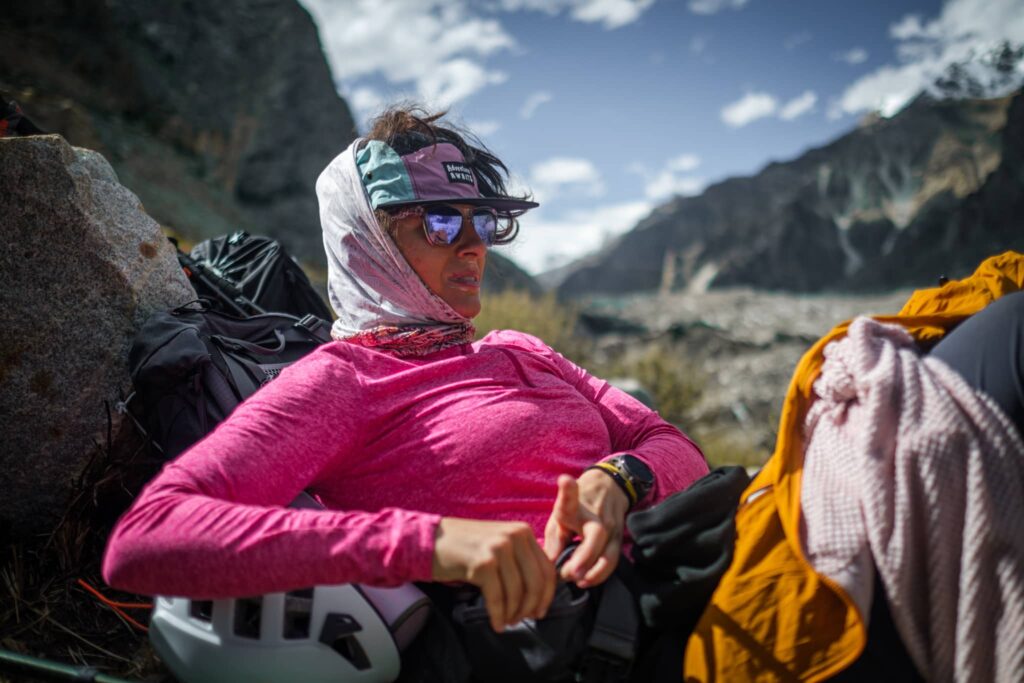
Right, now you know what a hiking buff is! But how do we maximize it’s performance?
To begin here are the most common ways to wear a buff:
- Neck Gaiter: This is how to wear a buff 101. Just pull it down over your head and around your neck like a scarf for sun and cold protection.
- Face Mask: Pull the buff up over your nose and mouth from the neck to shield against the wind and elements. I often also hook it over my ears (and even under my headphones) to keep it locked in place.
- Buff-Headband: Simply wear the buff as a band around your forehead. It’s a great solution for keeping sweat out of your eyes.
- Buff-Beanie: Pull the buff onto your scalp and then twist and tuck it into itself. This creates a lightweight beanie for warmth and could even be layered beneath your actual beanie for double the cranium insulation.
- Buff-Balaclava: Pull the buff over your head and then extend it up to cover the neck and lower face, leaving only your eyes exposed. (This one is a bit trickier to explain but this short video effectively shows how to wear a buff as a balaclava.)
- Do-Rag: Stretch the buff over your head and then tuck the ends in at the back for a snug, sweat-wicking cap.
- Sahariane (Desert Wrap): Drape the buff over your head and down the back of your neck for full sun protection in hot, dry conditions.
- Wristband: Wrap the buff around your wrist to absorb sweat (or just keep it handy for later use).
- Hair Tie/Scrunchie: Alternatively, a hiking buff also functions beautifully as a backup hair tie. No need to bring extras ties in your bags lady trekkers!
Whether you’re taking your buff into the mountains or the desert, that list gets you started. However, those are still the more common ways to use a buff.
Popular Ways to Tie Buff
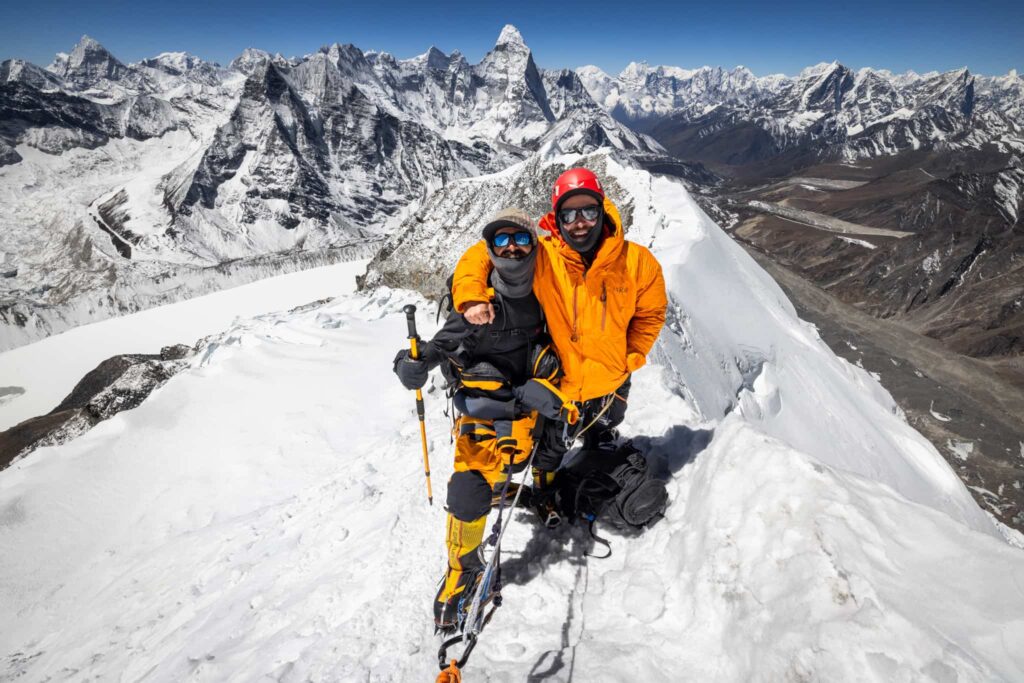
Buff-wearing 102: you can also tie a buff off for even more wearing options!
While buffs are designed to be seamless and stretchy, that can sometimes work against them if the fit is too baggy. By instead tying or folding them in specific ways, we can often achieve a better, more insulated fit.
Here’s how to tie a buff for a bit more impact:
- Basic Loop: Simply twist and fold the buff before going for the classic neck gaiter. The double loop covers more of the neck, providing extra warmth and a snugger fit.
- The Knot Tie: When using the buff in certain ways (e.g. as a headband), tie a small knot at the back or side. This tightens the overall fit and prevents it from slipping during intense activities.
- Twist & Tuck (Beanie Style): This is more secure than the last beanie method. This time, twist the middle of the buff and tuck one open end. This creates a more secure fitted beanie.
- The Double-Up: Fold the buff in half lengthwise before putting it on. I often use this method to double-up my face mask in proper galeforce conditions.
- Buff-Bandana: Fold the buff diagonally, tie the ends behind your head, and then pull it up over your face for a typical dust mask. (It’s worth noting you can also use a buff as a bandana by twisting it in the middle and pulling the looped ends over your ears—no tying necessary.
- Wrapped Headband: For a thicker headband, twist the buff in the middle before wrapping it around your head. Then tie off the ends for a more secure fit.
- Face Mask Lock: If your buff keeps slipping down when used as a face mask, you can also tie a knot at the back. This tightens the fit around your face.
The Best Uses For Buffs
At this point, it’s more of a question of what can’t you use a buff for. Buffs are a fantastic bit of gear for pretty much ALL outdoor activities.
If you’re just getting into mountaineering, trekking, or even day-hiking, then you already know that their multi-climate capabilities are a perfect fit. Moreover, any particularly cold or windy activities are equally built for the buff-life. Using buffs for skiing, snowboarding, or even high-altitude rock climbing is also a smart choice.
HOWEVER, once we start considering sweat absorption or other uses in hot or dusty climates, the scope of a buff’s brilliance only further widens. And that’s without even touching on their survival uses!
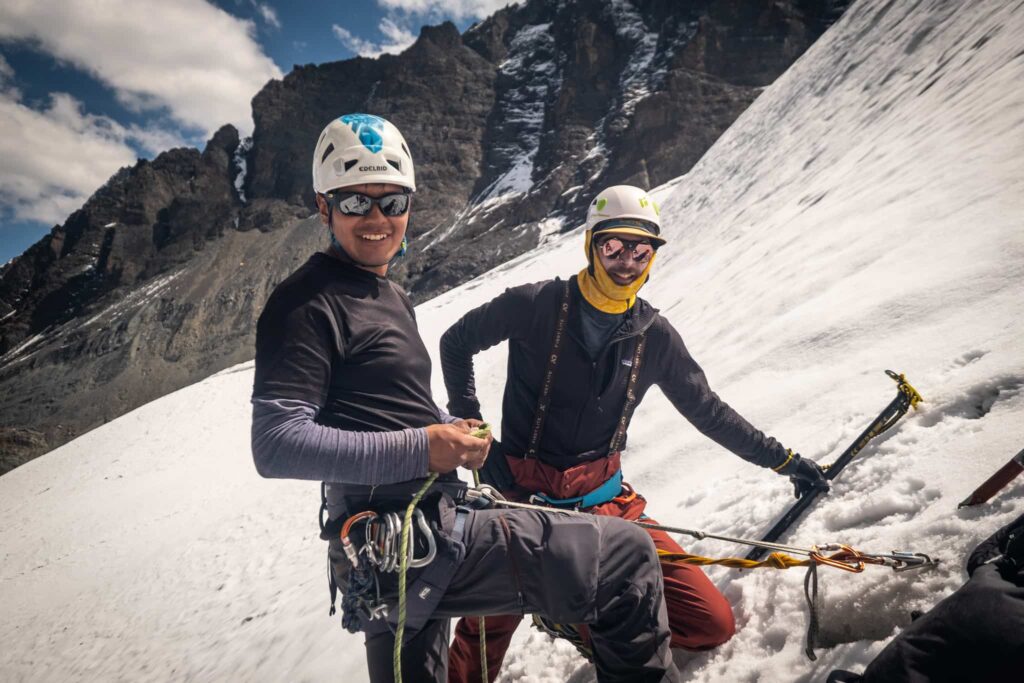
Briefly, here are other activities a hiking buff is perfectly equipped for:
- Running and Trail Running: Regulate your temp and keep the sweat out of your eyes!
- Cycling and Mountain Biking: Protect your face from dust and bugs.
- Motorcycling and ATV Riding: Line it beneath your helmet as a mask and wind barrier.
- Hunting and Wildlife Observation: More weather protection plus you can buy a camo-print buff to further conceal yourself.
- Travel and Everyday Wear: For me, a buff is an essential travel item and often part of my everyday carry too.
- Yoga and Gym Workouts: Great as both a sweatband and hairband when you’re getting fit for the next expedition.
And to finish off, we strongly advise including a buff in your setup if you are all into camping and bushcraft (or general survival scenarios). This is the final level of buff mastery, and it’s a good one.
We mentioned turning your buff into a makeshift water filter. However, there are heaps of other survival uses for a hiking buff. In an emergency, they can be used for first aid (bandages, slings, tourniquets, etc.), as towels, and even as blindfolds.
Long story short, if you enjoy outdoor activities at all—even just windy beach walks—invest in a buff! Worst-case scenario, if you don’t use it, it takes up less space than a pair of socks in your wardrobe.
Our Favorite Buff Brands
When it comes to buff brands, we’d advise just going with Buff® – these guys are the original progenitors of the neck gaiter. Since their original creation, the design of the hiking buff (with a little ‘b’) has spread across the world due to its immense popularity. But if you want that official, genuine quality, go with Buff®.
Personally, we’d recommend choosing a Buff® product that aligns with your choice of activity and climate. For example, in colder climates (14°F to 32°F), the ThermoNet Buff Series is a great choice. It’s well-insulated but still very usable in non-freezing conditions.
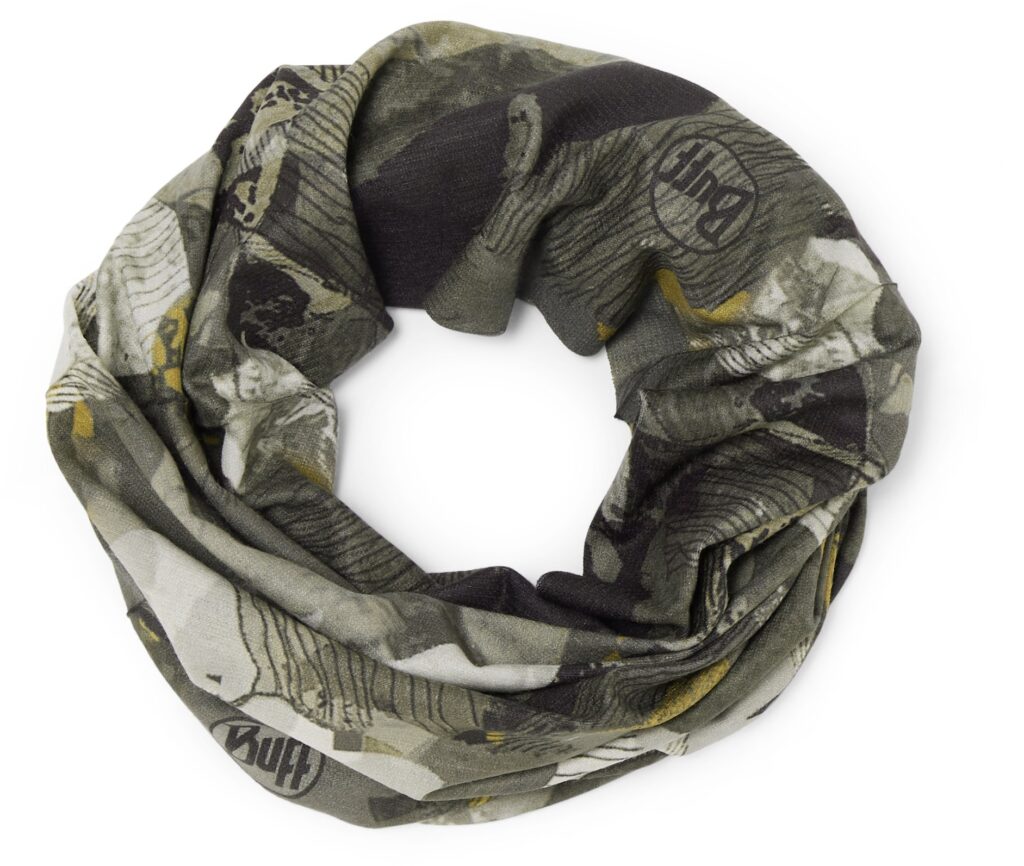
Alternatively, for more versatility, the lightweight Merino Buff is still very equipped for cold conditions. However, it also gives you that extra bit of adaptability in warmer climates (30°F to 65°F). (Plus merino is a fantastic material for buffs and anything else. It’s always a recommendation.)
Beyond that, there are more summery, more eco-friendly, and more arctic-ready buffs too. It’s about choosing one that aligns with your favorite activities.
That is until the day you have an entire wardrobe lined with buffs—one for every occasion!
Protect Your Neck Next Time
And that’s a (neck) wrap, fellow adventurers!
I may be biased about hiking buffs, but it’s with good reason. Buffs are the ULTIMATE neck and head gear for outdoor adventures.
Versatile. Adaptable. Ultra-lightweight. They add degrees to your setup without the ounces.
Now you know what a buff is and how handy they are, the only thing left to do is to try one.
Desert or mountains; rain, snow, sand, or dust—it doesn’t matter! There’s no better way to buff up your gear game than a hiking buff. They have saved our butts in more situations than we care to count, and have kept our necks pleasantly warm in all the rest.

